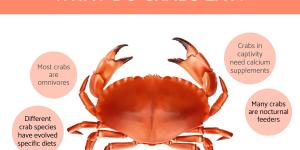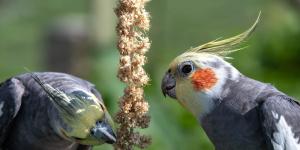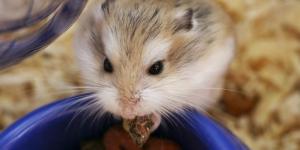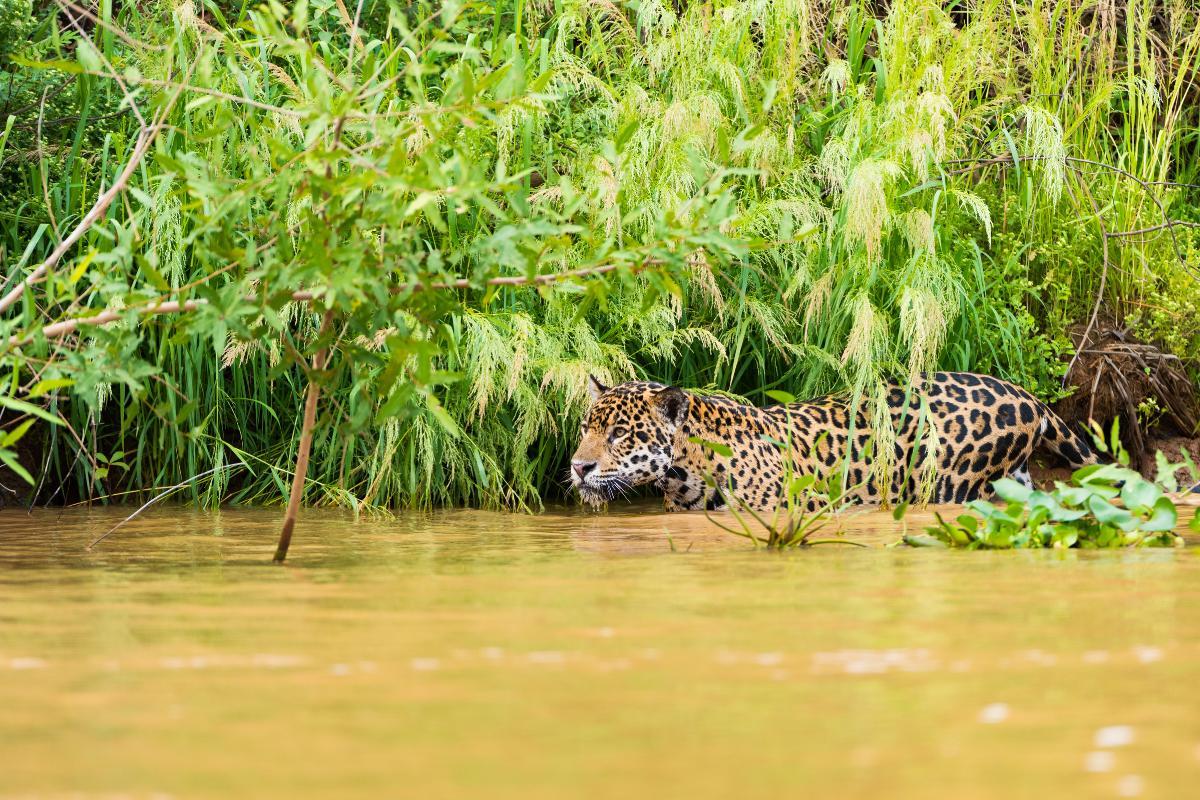What Do Jaguars Eat in the Wild?

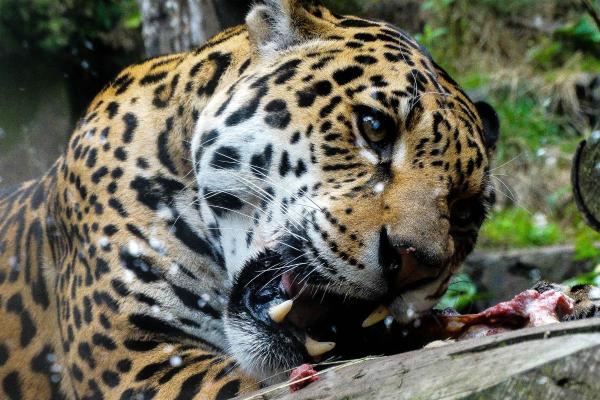
The jaguar (Panthera onca) reigns supreme as the largest cat species native to the Americas. These magnificent creatures are not just awe-inspiring predators; they play a critical role in maintaining healthy ecosystems. Jaguars boast a remarkably diverse diet, consuming over 85 different animal species. Being opportunistic hunters, they modify their tactics according to the environment and the prey that is accessible.
This AnimalWised article dives into the jaguar's diverse diet and masterful hunting strategies.
Does a jaguar only eat meat?
The jaguar (Panthera onca) is the largest cat species native to the Americas and the only living member of the genus Panthera found in the Western Hemisphere.
Jaguars once roamed extensively across the Americas, from the southwestern United States down to Argentina. However, due to habitat loss, hunting, and human-wildlife conflict, their range has significantly shrunk. Today, jaguars are primarily found in Central and South America, with the largest populations inhabiting the Amazon rainforest.
But, what exactly do jaguars eat? Well, jaguars have a very diverse diet, showcasing their adaptability and opportunistic hunting strategies. Unlike some predators who specialize in specific prey, jaguars are generalist carnivores, meaning they consume a wide variety of animals depending on their habitat and what's readily available.
This dietary flexibility is a crucial survival strategy for the jaguar. It allows them to adapt to changing environmental conditions and maintain healthy populations even in areas where prey availability may fluctuate.
Does a jaguar only eat meat?
Jaguars are apex predators, also known as a top predator. This means that they are at the highest level of the food chain. They have no natural predators themselves, and play a vital role in regulating prey populations and maintaining the ecological balance of their environment.
Jaguars are perfectly adapted to their roles as apex predators. Their powerful bodies, weighing up to 250 pounds, are built for strength and agility. They have sharp claws and retractable canines, allowing them to take down prey much larger than themselves.
Want to know more about the largest wild cats? This article has you covered.
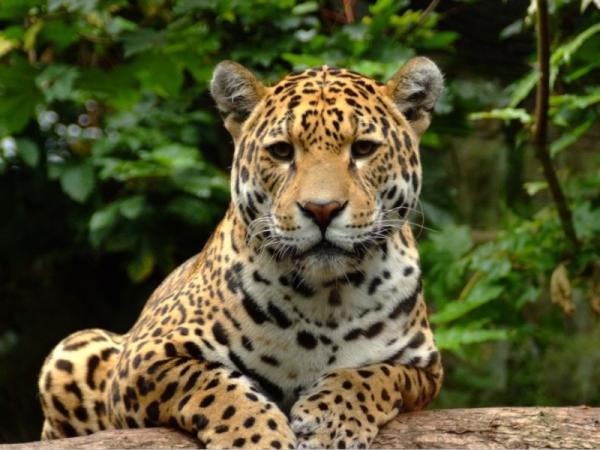
What does a baby jaguar eat?
During the first several weeks of life, jaguar cubs are entirely dependent on their mother's milk. This period is crucial as it provides the essential nutrients and antibodies necessary for their development and the establishment of a robust immune system.
After approximately 3 months, a significant transition occurs as the cubs begin to incorporate meat into their diet. Initially, their mother introduces them to this new diet by bringing small pieces of freshly killed prey, exposing them to different flavors and textures.
As the cubs grow, they gradually acquire vital hunting skills through observation and practice alongside their mother. This period of learning is crucial as it lays the foundation for their future as independent predators.
Throughout this developmental phase, which spans around 1-2 years, the cubs remain with their mother. During this time, they refine their hunting techniques and gain the necessary experience to successfully capture their own prey. Ultimately, by the time they part ways with their mother, jaguar cubs have evolved into skilled hunters capable of sustaining themselves in their natural habitat.
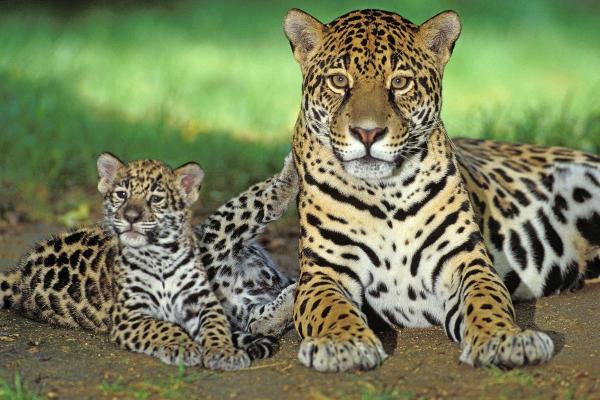
What does the adult jaguar eat?
As mentioned earlier, the jaguar boasts an impressive diverse diet that adjusts based on its environment and the available prey. While it's impossible to pinpoint an exact number due to variations in habitat and individual preferences, researchers estimate that jaguars can prey on over 85 different species of animals. Some of these include:
- Capybaras (Hydrochoerus hydrochaeris)
- Deer (Family Cervidae)
- Peccaries (Family Tayassuidae)
- Sloths (Order Pilosa)
- Coatis (Family Procyonidae)
- Rabbits (Family Leporidae)
- Opossums (Order Didelphimorphia)
- Pacas (Genus Cuniculus)
- Monkeys (Order Primates)
- Tapirs (Family Tapiridae)
- Armadillos (Order Cingulata)
- Rodents (Order Rodentia)
- Small cats (Family Felidae)
- Caimans (Subfamily Caimaninae)
- Iguanas (Family Iguanidae)
- Snakes (Order Squamata)
- Tegu lizards (Family Teiidae)
- Turtles (Order Testudines)
- Crocodiles (Family Crocodylidae)
Jaguars are adept semiaquatic predators, often leveraging their swimming prowess to hunt in aquatic environments. In regions rich in rivers and lakes, jaguars readily include various fish species such as catfish and piranhas in their diet.
Depending on their habitat, jaguars may occasionally target ground-dwelling birds such as seriemas, as well as aquatic birds like hoatzins. These avian species can become opportunistic prey for jaguars, particularly among younger or less experienced individuals.
Jaguars, like many other predators, may occasionally scavenge on carrion, especially when other prey sources are scarce.
Explore this article to learn about diverse creatures that share the jaguar's appetite for snakes.
How does the jaguar hunt?
Jaguars possess a formidable array of hunting skills, allowing them to overpower prey significantly larger than themselves.
Firstly, jaguars are solitary hunters who prefer to stalk and ambush their prey alone. This approach demands exceptional patience as they utilize cover and camouflage to remain unseen and unheard.As ambush predators, jaguars rely on surprise and power to overwhelm their prey. Patiently stalking their target, they often use vegetation or natural features as cover until they are close enough to launch a sudden attack.
Being nocturnal creatures, jaguars are most active at night, allowing them to hunt under the cover of darkness, thus enhancing their ability to stalk prey undetected. Their keen senses of sight, smell, and hearing play a pivotal role in locating and tracking prey effectively. With excellent night vision, jaguars can navigate and identify prey even in low light conditions.
Their powerful jaws and sharp teeth serve as their primary weapons, capable of delivering a fatal blow with a single bite to the neck or head, particularly effective against smaller prey. Despite their size, jaguars are surprisingly strong and agile. They can use their powerful legs to propel themselves forward in a burst of speed during the attack, enabling them to take down even fast-moving prey.
Furthermore, jaguars demonstrate adaptability in their hunting strategies, modifying their approaches based on the prey they are targeting. For instance, they might employ stalking and ambush tactics in densely forested areas, or opt for a chase and capture strategy in open grasslands.

How much does a jaguar eat a day?
The daily food intake of a jaguar can vary depending on several factors, including their size and age, activity level and prey availability. The size and nutritional content of the prey they catch will impact how much a jaguar needs to consume. Hunting success and the abundance of prey in their territory also play a role.
With these factors in mind, the average daily food consumption for an adult jaguar is estimated to be between 1.2 to 1.5 kg (2.6 to 3.3 lbs) of meat.
Want to learn more about big cats? Check out this article that breaks down the key differences between jaguars, leopards, and cheetahs.
If you want to read similar articles to What Do Jaguars Eat in the Wild?, we recommend you visit our Healthy diets category.
- Emmons, L. H. (1987). Comparative feeding ecology of felids in a neotropical rainforest. Behavioral ecology and sociobiology , 20 , 271-283.
- Quigley, H., Foster, R., Petracca, L., Payan, E., Salom, R. & Harmsen, B. 2017. Panthera onca (errata version published in 2018). The IUCN Red List of Threatened Species 2017: e.T15953A123791436. Accessed on 26 February 2024.
- Nogueira, J. 2009. Panthera onca . Animal Diversity Web. Available at: https://animaldiversity.org/accounts/Panthera_onca/

